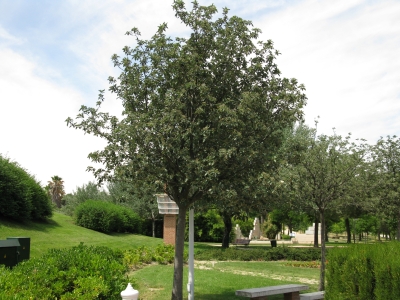Common name(s): Swedish whitebeam
Scientific name: Sorbus x intermedia (triple hybrid between s. aucuparia, s. torminalis, s. aria)
Family: Rose - Rosaceae
Native range: Southern Sweden and nearby areas
Type: deciduous
Non-native range: Planted as an urban ornamental tree
Average height range: 10 - 20 meters
Forest or habitat:
Wood density and quality:
Leaf shape: orbicular - obtuse (almost circular)
Leaf arrangement:
Leaf margin: lobate - serrate
Leaf venation: pinnate
Leaf stem: 1cm approx.
Leaf surface: dark green, glabrous, (Reverse - grayish-green, pubescent (hairy))
Inflorescence: Corymb
Flower: White, 5 petals, 1cm
Reproduction: tetraploid apomictic
Fruit: Orange to read oval pome
Edible?: no
Seed dispersal mechanism: birds (Thrushes and Waxwings)
Bark: Gray and fairly smooth
Traditional uses: ornamental
Commercial uses: ornamental
Invasiveness: unknown
_______________________________
Árboles madrileños, Antonio López Lillo y Antonio López Santalla, 2007, Obra Social Caja Madrid.

































